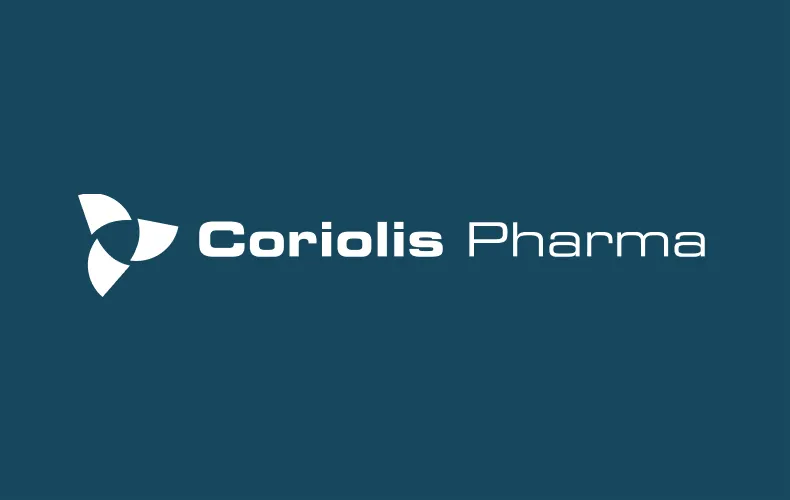Particle Characterization
Coriolis Pharma is a leading contract laboratory providing analytical services for particle characterization. Particles are potentially present in all biopharmaceutical samples and can originate from various sources. With the advancement of gene and cell therapies, the active pharmaceutical ingredient (API) or therapy can be a particle, changing the scope of the analysis compared to traditional impurity analysis.
Particle Characterization Tailored to Your Needs
The presence of particles can negatively influence the safety and efficacy of the therapy.
They can be introduced to a therapeutic in several different ways, including:
- Directly derived from the API, for example, due to an insufficiently stable therapeutic protein (intrinsic particles)
- Be introduced by formulation excipients, for example, as degradation products or particulate impurities (inherent particles)
- Be generated by the production process, for example, during pumping or filtration steps (extrinsic particles)
Coriolis experts utilize the newest technologies to cover the entire size range and consider that the API can actually be a particle for many advanced therapy medicinal products (ATMPs). Examples are cells, viral vectors and drug delivery systems, such as lipid nanoparticles for mRNA delivery.
Coriolis has strong scientific expertise in particle characterization and offers an extensive portfolio of established and novel technologies for orthogonal particle analysis in your biopharmaceutical sample.
Aggregate or Particle?
The terms aggregate and particle are not used consistently in the scientific community and may differ depending on the biopharmaceutical in question. For example, a monomeric virus may be considered a virus particle, while a virus dimer may be considered an aggregate. Also, a protein aggregate may become large enough to be considered a particle. For species in the micrometer and visible size range, please also refer to our particle characterization services.
Particle Characterization as a GMP-Compliant Service
Coriolis is GMP accredited by the local regulatory authority and has been reinspected successfully by the authority and audited by several clients. With a strong focus on the analysis of subvisible particles, we feature the methods emphasized in current guidances, including:

Light Obscuration (LO)
- Quantification of particles ≥ 10 μm and ≥ 25 μm following USP <788>, USP <789>, and Ph.Eur. 2.9.19.
- Development of appropriate method in accordance with USP <787> for ophthalmic products considering the challenge of low volume requirements and statistical challenge of the strict limits for particles
- Quantification of particles ≥ 1 µm for high concentration / high viscosity samples

Micro-Flow Imaging (MFI)
- Quantification, characterization and visualization of particles ≥ 1 μm
- Customized filter development for differentiation between particles of different origin (protein, silicone oil droplets, filter shedding, etc.)
- Referred to by regulatory authorities as an orthogonal method to light obscuration

Nephelometry / Turbidity
- Quantification of turbidity according to Ph.Eur. 2.2.1 and USP<855>
- Suitable for stability studies
Particle Characterization Testing Methods
We can select the most suitable approach for your analytical challenge, whether following a standardized in-house workflow or a custom-tailored solution.
Analytical Method Development, Qualification and Validation
For common sample types, we can often apply standardized methods with little setup effort. However, when needed, our experienced analytical experts create or optimize custom methods tailored to your active pharmaceutical ingredient, product type and development phase.
Particle Characterization for Your Drug Product
Coriolis Pharma’s deep expertise across many biologic modalities, combined with input from world-leading external advisors, offers the knowledge and experience needed to solve even the most complex formulation and drug development challenges.
Your Phase
Our expert team has the expertise and experience to guide your biopharmaceutical development program from preclinical and early-phase development to the market.
Particle Characterization Frequently Asked Questions (FAQs)
-
Particle characterization involves detecting, sizing, counting, and identifying visible and subvisible particles in drug products. This is essential for ensuring product safety, efficacy, and regulatory compliance—especially as particles may originate from the API, excipients, or manufacturing processes.
-
Particles can be intrinsic (from unstable APIs), inherent (from excipients or degradation), or extrinsic (introduced during production, such as from pumps or filters). The API itself is considered a particle for many ATMPs, such as viral vectors and lipid nanoparticles.
-
Coriolis covers the full particle size range—from nanometer-scale aggregates to visible particles—using orthogonal methods like Dynamic Light Scattering (DLS), Micro-Flow Imaging (MFI), Light Obscuration (LO), and Transmission Electron Microscopy (TEM).
-
Coriolis combines deep scientific expertise with a broad platform of cutting-edge analytical methods. We tailor each study to your API and development phase and can provide GMP-compliant particle testing aligned with global pharmacopeias and regulatory expectations.
-
In ATMPs, the API may be a cell, virus, or nanoparticle. This shifts particle analysis from impurity detection to API quantification and characterization. Coriolis offers the advanced techniques needed to analyze these complex therapies accurately.
-
Coriolis features regulatory-preferred methods, including:
- Light Obscuration (LO) per USP <788>, <789>, and Ph.Eur. 2.9.19
- Micro-Flow Imaging (MFI) for particle visualization and origin identification
- Nephelometry / Turbidity per USP <855> and Ph.Eur. 2.2.1
-
Yes. Coriolis is GMP-accredited and offers particle analysis for quality release, stability studies, and ophthalmic formulations. We also support method development per USP <787> for low-volume products.
-
The terms “particle” and “aggregate” may differ based on context. A protein aggregate may grow large enough to be classified as a particle. Likewise, in viral vector analysis, a single virus may be a “particle,” while a dimer could be termed an aggregate. Coriolis offers both aggregate and particle analysis services tailored to the molecule type.
-
By understanding particle formation, origin, and stability, Coriolis helps identify formulation risks, optimize excipient choices, and troubleshoot manufacturing issues. This enables data-driven decision-making at every development stage.
-
We support antibodies, peptides, therapeutic proteins, nucleic acids, gene and cell therapies, viral vectors, vaccines, and nanoparticulate delivery systems—across all development phases from preclinical to commercialization.
Particle Characterization Resources

Publications
June 6, 2025

Publications
Stability of Jurkat cells during short-term liquid storage analyzed by flow imaging microscopy
April 7, 2025


